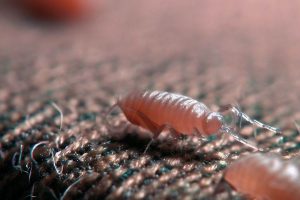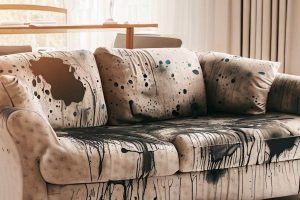As anyone with a sofa knows, knowing How To Clean Sofa Cushions can be a challenge. From kids and pets to food spills and dirt tracked in from outside, it’s all too easy for your couch cushions to get dirty. But don’t worry—with just a few simple steps, you can keep them looking like new.
I’ll show you how to hoover the cushions, remove stains, use a mild detergent, wash them off, dry them and refresh them. You won’t believe the difference! So grab your supplies and let’s get started cleaning those couch cushions with Nousdecor now!
Key Takeaways of How To Clean Sofa Cushions Cover
- Gather necessary supplies such as a hoover with upholstery attachment, cleaning solution, brush or sponge, clean cloths, and baking soda.
- Hoover cushions to remove debris and pet hair before cleaning.
- Use a mixture of warm water and soap or all-purpose cleaner to gently scrub each cushion surface.
- Allow cushion covers to air dry before placing them back on the couch.
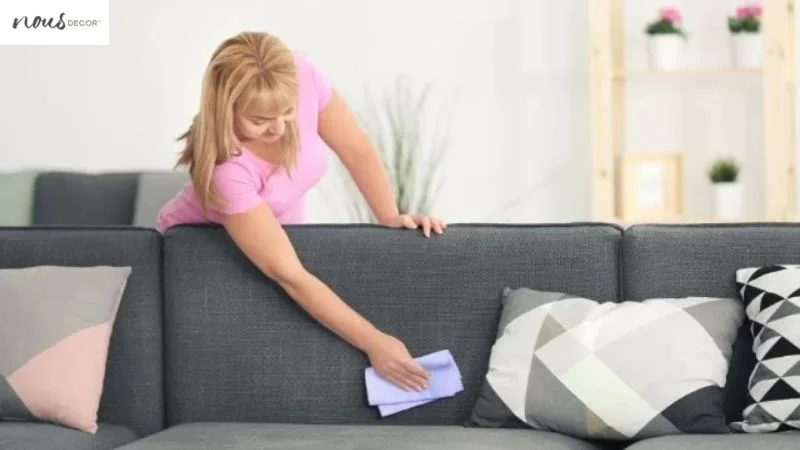
Step 1: Gather Your Supplies To Clean Couch Cushions
Gather your supplies to get started on cleaning those cushions – it’s time to tackle that mess! Depending on the material of your couch, you may need a few specific items for cleaning your furniture. For leather, make sure you have a quality leather cleaner and conditioner.
If you have fabric upholstery, use a gentle all-purpose cleaner and some dish soap (see fabric sofa cleaning tips for more info). Additionally, grab a soft brush or sponge, clean cloths for wiping and drying, hoover with an upholstery attachment, and baking soda for deodorizing.
Once you have everything gathered in one spot it’s time to start cleaning. Begin by removing any debris like crumbs or pet hair using the hoover attachment. Make sure to go over the entire cushion including between crevices.
Next mix a solution of warm water and dish soap or all-purpose cleaner depending on type of fabric; this will be used for scrubbing away dirt and stains as well as neutralizing odors from spills or pets.
Dip the brush or sponge into the soapy water then gently scrub each cushion surface making sure not to rub too hard as that can damage fibers of delicate fabrics like velvet or chenille weaves.
After scrubbing dry off excess liquid with clean cloths then sprinkle baking soda generously across each cushion surface; this will help absorb lingering odors if needed before hoovering again to remove remaining powder residue.
Finally if dealing with leather furniture use an appropriate cleaner according to package instructions – following these steps should leave your cushions looking like new!
To ensure they stay fresh much longer consider spot-treating them every 6 months or so with fabric protector spray which helps repel dirt and stains while preserving color vibrancy for years to come.
And with that job complete its time move on to vacuuming the cushions…
Step 2: Hoover the Cushions With a Vacuum Cleaner
Give those cushions a good once-over with the vacuum to get rid of any dust or crumbs. Vacuuming your cushions is an important step in their overall cleaning and maintenance. Here’s what you should keep in mind:
- Use the upholstery attachment on your vacuum for best results.
- Make sure you use low suction power, especially if your cushion fabric is delicate or has metallic details.
- Don’t forget to check between the crevices of the cushions as well!
- Be gentle when vacuuming – don’t press too hard, which can damage the fabric fibers.
Once you’re done with vacuuming, take a closer look at each cushion to see if there are any larger pieces of dirt that need to be removed before proceeding. This will help ensure that when you move on to remove stains, all particles and debris have been properly eliminated from the surface area first.
With that done, you’ll be ready to tackle any stubborn spots or discolorations that may have appeared over time.
Step 3: Spot Clean to Remove Stains on the Cushion Cover
Once you’ve vacuumed, it’s time to get rid of any stains that may have built up on your cushions – just grab a cloth and some cleaning methods, and you’re ready to go! It’s important to use a damp cloth when spot cleaning because this will prevent the stain from spreading.
One of the best ways to clean is to start by gently dabbing the area with a cloth soaked in water. This will help remove any excess dirt that may be stuck in the fibers. You can also use a mild dish soap or laundry detergent mixed with water for tougher stains.
Be sure to read the care instructions on your sofa before using any cleaners. If possible, test a small area first before applying any solution directly onto the fabric. Work slowly in circular motions until the stain has lifted away from the fibers and is no longer visible.
Once you’ve finished spot clearing, allow your cushion covers ample time to dry cleaning before placing them back on your couch or recliner. This last step is essential as moisture trapped inside cushioning can cause mold growth if left unchecked.
If you’re dealing stains on padding, check out our article on removing stains from upholstery instead!
With patience and care, you’ll be able to keep your couch looking like new for years!
After spot cleaning, it’s important to move onto using mild detergents as part of your regular maintenance routine to extend its life even further.
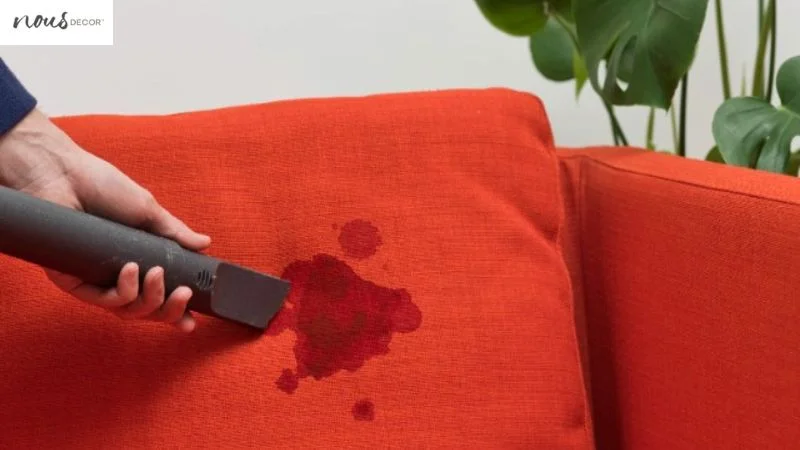
Step 4: Use a Mild Detergent Cleaning Solution To Wash Couch Cushion
For regular maintenance and to clean your sofa easily, use a mild detergent to keep your couch looking its best.
Mild cleaning liquids provide the most gentle cleaning experience and are ideal for general upholstery cleaning. They are usually designed to be safe on fabrics with colors that can easily fade or run, so you don’t have to worry about ruining your cushions.
Here are four reasons why using a mild cleaning liquid is great for cleaning your couch cushions:
- It’s easy and convenient — All you need is some water, a mild detergent, and a large sponge or cloth to get started.
- It’s safe on fabrics — The right type of soap won’t damage delicate materials like velvet or suede.
- It removes dirt quickly — Mild cleaners make it easy to scrub out stubborn stains and spots without having to break out the heavy-duty cleaners.
- It leaves behind a pleasant scent — Many mild detergents come in fragrant varieties that will leave your furniture smelling fresh and clean after every use.
Always remember to read the instructions on the bottle of soap before using it; some types may require additional steps such as pre-soaking or air-drying afterwards. To ensure optimal results, carefully follow all directions provided by the manufacturer when using any type of cleaner on your cushions.
With proper care and regular maintenance, you’ll be able to keep your sofa looking its best for many years to come!
Rinsing away any remaining residue from the cushions is an important part of this process; not only does it help remove any remaining soap from fabric fibers but also prevents dirt from sticking around in damp areas where mold could grow rapidly over time.
Step 5: Rinse the Removable Cushions for Deep Cleaning
After cleaning, make sure to rinse the cushions to wash away leftover soap and grime, leaving them feeling soft and refreshed. Use a damp cloth or sponge to wash each cushion with fresh water. This can be done via hands or you can wash the covers in the washing machine.
Make sure to remove as much of the cleaning liquid as possible from the material. If you have access to an outdoor hose, this is ideal for giving your cushions a good deep cleanse. For more delicate fabrics such as velvet or silk, use a milder approach by running lukewarm water over it before wiping off with a damp cloth.
It’s important not to oversaturate your fabric while washing, so don’t leave out in direct sunlight after it has been washed – this could cause discolouration and shrinkage. When finished washing each cushion, lightly press out any remaining moisture using a dry towel before allowing them to dry completely indoors where they’re protected from harsh weather conditions outside.
As drying can take some time depending on the material of the coverings of your cushion and how much cleaning liquid was used during washing, be patient; you’ll know when they’re ready when all evidence of soap residue is gone and they feel light and fluffed up again!
With proper care taken when washing and rinsing couch cushions you can look forward to many years of comfortable seating that looks good too!
Moving onto the next step: allow the cushions time to completely dry before bringing back into use.
Step 6: Allow the Cushions to Air Dry For Sparkling Clean
Once the water has been pressed out of the coverings of your cushion, they should be left to dry indoors. This is an important step in ensuring that any dirt, debris, or moisture is completely removed from the fabric. To achieve a thorough drying:
- Hang up the coverings of your cushion on a clothesline or drying rack.
- Place them away from direct sunlight or other sources of heat for best results.
- Allow several hours for them to fully air-dry before attempting to reassemble the cushions and put them back on your sofa.
If you spread out the couch cushion covers in a warm area with good airflow, such as near an open window, this can help speed up the process significantly – but be sure not to leave them out too long so that they don’t pick up any dust particles from outside!
It’s also important not to forget about them during this period; if they’re still slightly damp after several hours have passed, you may want to give it more time before proceeding with reassembly and returning them onto your furniture piece.
Without properly drying your cushions after washing, there is potential for bacteria and mold growth as well as unpleasant odors due to trapped moisture in the fabric which can become difficult (if not impossible) to remove later down the line.
Moving ahead with refreshing your couch cushions will help maintain their comfortability and longevity even further!
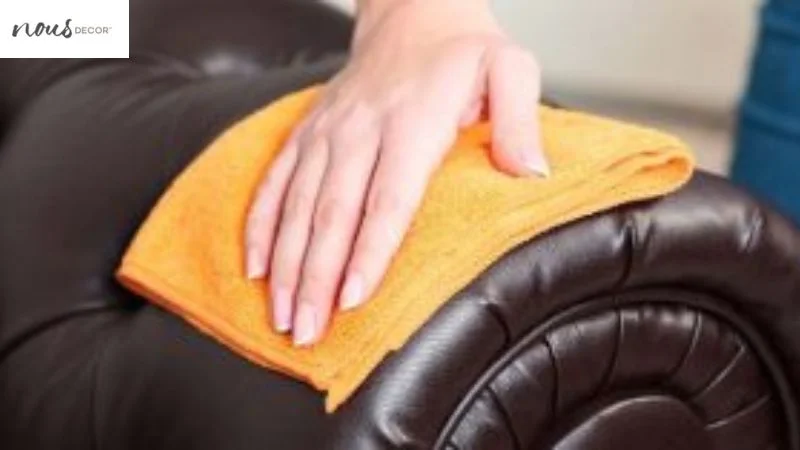
Step 7: Refresh the Microfiber Cloth Cushions Clean
Give your cushions a new lease on life by refreshing them! For those couch cushions that bear the brunt of daily use and are looking a bit worse for wear, there is hope. Refreshing your cushions can help to restore their shape and vibrant colors.
Start with vacuuming any dust or debris from the cushion’s surface. Next, fluff it up by grabbing each corner in turn and giving it a gentle tug, repeating this step until you get the desired result.
If you have removable covers on the cushion, remove them and wash according to instructions provided on the care label. Once they’re dry, put them back on over the fluffed-up cushion insert for an instant facelift.
For deeper cleaning needs, consider spot treating with mild soap and water or a solution of white vinegar and lukewarm water before drying thoroughly with a towel or hairdryer set to low heat setting — just be careful not to overheat as this could cause damage to fabrics.
If you have leather couch cushions that need refreshing, make sure to clean only using products specifically designed for leather furniture. Follow directions carefully and always test in an inconspicuous area prior to full application.
Cleaning couch cushions can bring tired-looking furniture back to life again without having to go through extensive renovations or fork out extra money for replacements — all it takes is some time and effort!
If you’re using suede couch, check out our article on maintain your suede sofa instead!
Frequently Asked Questions
Conclusion
I’ve successfully cleaned my couch cushions! Vacuuming was the first step to remove any loose particles and debris, then I spot-cleaned any stubborn stains. After that, I used a mild detergent and washed it off with a damp cloth. Finally, I let the cushions air dry before refreshing them with fabric refresher spray. Now my sofa looks and feels like new again – mission accomplished!
For more sofa, check out our article on top-rated couches available for more info!





